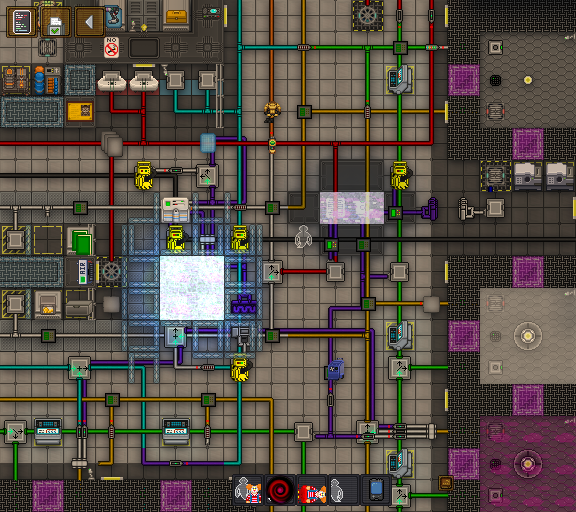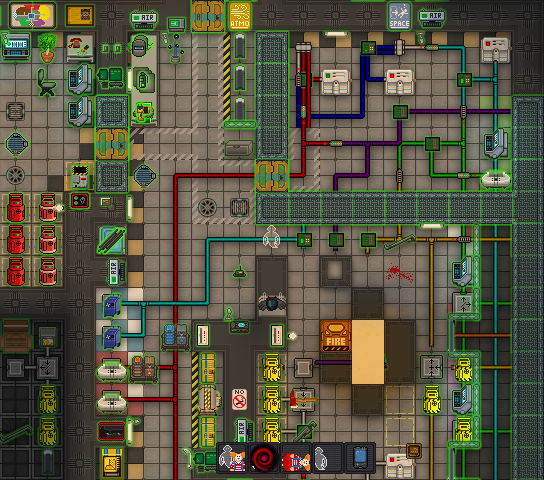Assuming you know how to get tritium, the reinforced window box monster is based on How to improve your tritium burn chamber yields but made outside of a turbine, window spam is there to block rads. If you don’t get much of the tritium chamber or the tritium guide, then you need to learn more atmos first before tackling this guide.
Fusion chamber:
On picture top right, the 2x1 chamber surrounded by regular walls is a fusion chamber. Inside of this chamber is one injector, 2 heat exchange pipes, one passive vent. Passive vent is so you can easily scan the inside of the chamber from outside or tap the insides into a canister. Injector is connected to plasma gas miner supply and a separate connector where you can plug in any gases you want to put inside the chamber. There’s a canister connected to the heat exchanger to provide heat conduit gas, you’ll want pure plasma for this.
Once you have pictured minimalistic regular wall chamber setup, you can optionally make sure that the insides are vacuum so you don’t accidentally end up with nitrogen inside the chamber which can lead to hyper noblium formation and stopping any further fusion.
How to fusion and what you need to start it
- 2x canister with 29% oxygen and 71% plasma (burn mix), heated to at least 100C to start internal burn.
- 1x canister with 500 mols of tritium, any temperature
- meson goggles
Proceed to dump the 2 burn mix canisters into your fusion chamber, this results in hot co2 and a bit of waste gas (o2 or plasma). If you used the 29% oxygen mix, it should end up with near 0 oxygen inside chamber.
After the burn mix inside chamber stops burning, dump in the tritium canister.
Once the above is done, you can start the fusion by pumping in pure plasma for as long as you see tritium gas (green on mesons) inside the chamber. The moment plasma gets inside, fusion starts. Either keep distance or wear a rad suit. Once the tritium is no longer visible on mesons, turn off plasma input, your fusion is now fully cooked and can be used to heat up gases thanks to the heat exchanger pipes you surely put inside the chamber.
If you just want to hear geiger counter tick for whole shift, keep dumping in tritium and plasma for more fusion reaction.

